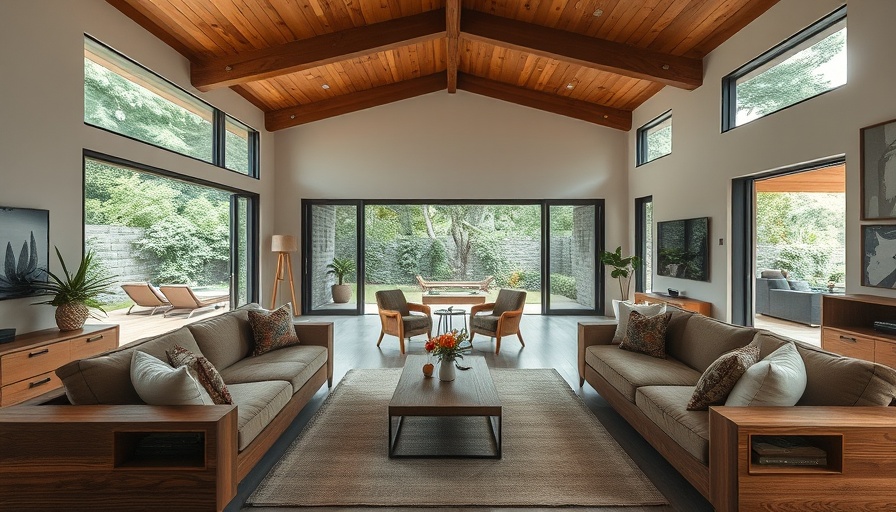
Casa Girasol: A Beacon of Light in Valle de Bravo
The stunning Casa Girasol, designed by the Mexico City design studio Locus, is revolutionizing the way homes interact with their environment. Nestled in a pine forest in Valle de Bravo, the home showcases an architectural genius aimed at harnessing natural light in a region known for its cold and gloomy climate. The residence's circular form is not just aesthetically pleasing; it serves a critical functional purpose, maximizing sunlight while embracing its surrounding tranquility.
Embracing Nature Through Innovative Design
Building atop a sloped terrain, the architects opted for a unique concept of a traditional house-patio typology, forming a broken circular structure that opens up entirely to the south. According to Locus, this design greatly enhances the sunlight that enters the interior, creating a warm, inviting space in stark contrast to the often cold conditions outside. The house is also carefully oriented to maintain privacy and to promote intimate pathways that connect various spaces.
The Architectural Wonders of Skylights and Clerestory Windows
One of the standout features of Casa Girasol is its extensive use of clerestory windows and skylights. These are strategically placed to bring light in from multiple angles—north, east, and west—ensuring that all spaces within the home are naturally illuminated throughout the day. The design choice not only serves practical purposes by reducing the need for artificial lighting but complements the home’s serene aesthetics. Each room features high windows that favor natural light while providing residents privacy—a fundamental concern for those living in shared spaces.
Materials and Sustainability: A Conscious Choice
Casa Girasol is a fine example of how modern architecture can seamlessly blend with sustainability principles. The house employs a combination of earth-toned pigmented concrete and exposed laminated oak beams, which resonate warmth in the interior spaces. Additionally, the strategic placement of solar panels ensures the home utilizes the best sun exposure, embodying the essence of eco-friendly design. This not only supports the home's operational efficiency but also aligns with a growing trend among remote workers seeking sustainable and health-conscious living spaces.
Lessons for Digital Nomads: The Perfect Workspace
For digital nomads who often seek harmony in their workspace, Casa Girasol exemplifies a conducive environment. The openness and natural light in the home’s layout can inspire creativity and foster productivity—a vital consideration for those who work remotely. As many look to create their own home offices, it’s paramount to account for elements that promote comfort and efficiency. Drawing inspiration from this innovative design can lead to creating spaces that balance aesthetic appeal with professional functionality.
A Legacy of Innovation: Linking with Villa Girasole
Casa Girasol's innovative spirit resonates closely with the iconic Villa Girasole in Italy, known for its unique rotating design that follows the sun. Just like Locus’s creation, Villa Girasole was built with the intention of maximizing sunlight exposure. Though situated in different climates and cultures, both structures share a philosophy advocating for enhancing human comfort through intelligent design. They remind us that architecture can evolve alongside our needs—whether for leisure or work.
Creating Connections: Invitation to Reimagine Your Space
As life continues to blend work and leisure, Casa Girasol represents a profound opportunity for individuals looking to enhance their environments thoughtfully. The harmony of privacy, natural light, and sustainability brings essential insights into how homes can be crafted with intention. For those navigating remote work, understanding how design affects mental and environmental well-being becomes a tool for achieving productivity and fulfillment.
Explore your space and consider how elements of nature, light, and sustainability can influence your home office. Casa Girasol serves as a reminder that the designs we choose for our living and working spaces can significantly enhance our quality of life.
 Add Row
Add Row  Add
Add 




Write A Comment